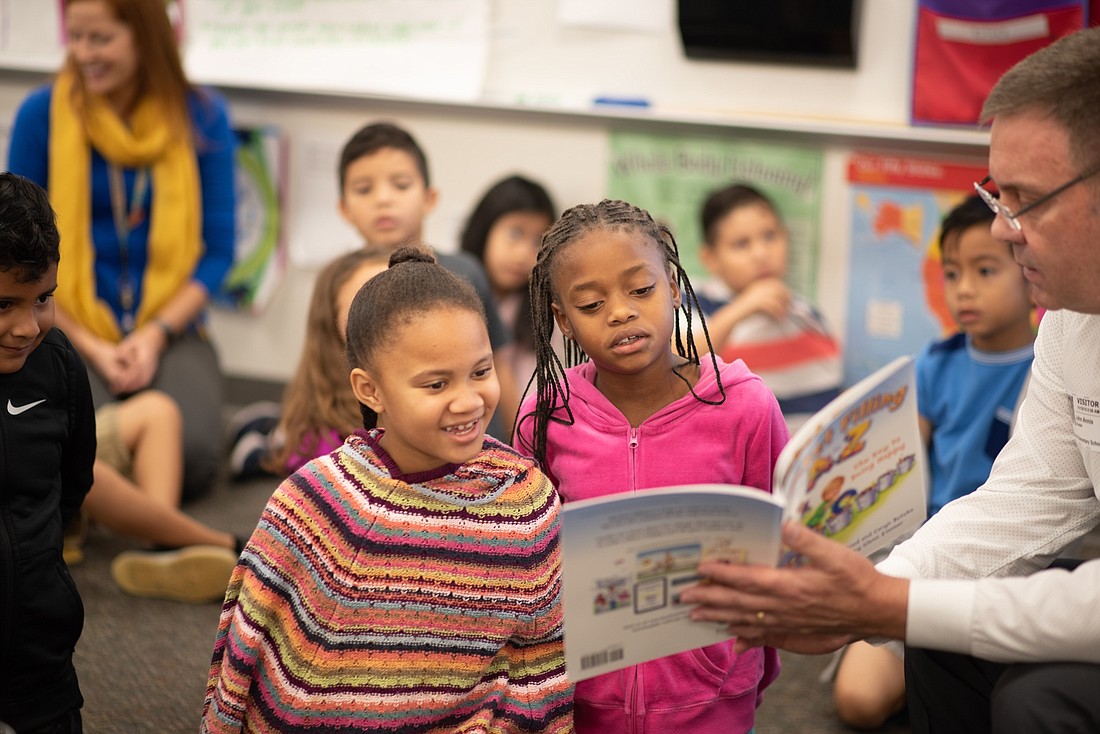- January 4, 2025
-
-
Loading

Loading

Each year, there’s excitement in the air as students line up to purchase books of their choice at the Scholastic Book Fair. But when the district has to purchase new books, it becomes a far more costly and complicated process.
The district is preparing to purchase new English and language arts books for the 2021-22 school year at a total estimated cost of $5.7 million.
The district’s purchasing schedule follows the state’s adoption of textbooks, which follows a five-subject cycle, meaning each core subject typically gets updated every five years. The district does have some flexibility to postpone book adoptions to allow for the purchasing of books in other subject areas, such as music, physical education or arts.
However, the district is facing an urgent timeline with the English and language arts adoption because the state is changing its ELA standards. The new standards will need to begin implementation in the 2021-22 school year to prepare students for new state assessments in 2022-23.
“It’s imperative that our teaching practices change to be aligned with those standards, and we need those curricular resources to be able to teach the standards they are asking us to teach,” said Sue Meckler, the director of middle school and curriculum instruction.
The last time the district purchased new English books was in 2014 at a total cost of $3.4 million, so the estimated 2021 costs represents a 69% increase.
The new standards, Meckler said, are driving the steep cost increase because publishers had to work under a time crunch to produce new books that would fit the standards.
ELA also is the most expensive adoption, Meckler said, because it requires ancillary materials to guide reading at various educational levels. It also requires a one-to-one adoption, meaning each student has a textbook to take home rather than just a classroom or digital set.
Meckler said it is unlikely that the district would ever switch to an all-digital format because students need to be able to mark up their texts. Also, not all students have internet access at home.
Math is the second most expensive adoption, which will be the next up in the cycle. Early projections show the cost of an adoption at $4.91 million in 2022.
When the district chooses new books, it has a set of guidelines provided by the state, but it has discretion to choose its own publisher. To choose the best publisher for every grade level, the district puts together committees of teachers from each school to give input on the top district choices.
“The hope is that teachers don’t lose a sense of autonomy,” elementary curriculum specialist Holly Chesnoff said. “We want them to have the ability to make some of their own decisions about how best to help their students.”
After the teachers give their input, the district makes the final call. Rob Manoogian, the director of instructional materials and library services, said the main focus is on what is best for students, not cost.
“We have a tendency for good, I think, to go above and beyond what the state asks us to do,” Manoogian said.
The district this year received $3.4 million from the state for instructional materials, but money from those funds has to be directed to the district’s 12 charter schools for instructional materials. Additionally, money is allocated to each school based on student enrollment.
After factoring for those items, the district was left with $2.8 million. It also was able to roll over $1.39 million, bringing the total allocation to $4.1 million.
This means the total $5.7 million adoption cost is more than the district’s total allocation. It also has to find funds for workbooks, online licenses, dual enrollment and library books.
“Districts are really hurting because when you look at the allocation that we’re given by the state, it doesn’t give you enough money to do purchases like this, let alone pay for other expenditures on an annual basis,” Meckler said. “But you’re in a situation where you basically have to do it, or you’re not going to be in compliance.”
The district could defer its ELA purchases for a year, Manoogian said, but then it would be in deeper financial trouble when it has to adopt ELA and math books in the following year.
The district, like many others throughout Florida, has lobbyists who regularly talk to lawmakers about the impacts on schools. Manoogian said state funding is down almost $100 million over the past 10 years for instructional materials.
“My father always told me, ‘If you get a nickel, it’s a nickel more than you had.’ So it’s great we get some funds, but you can see we’re underfunded, and it’s the same way for each and every district,” he said.